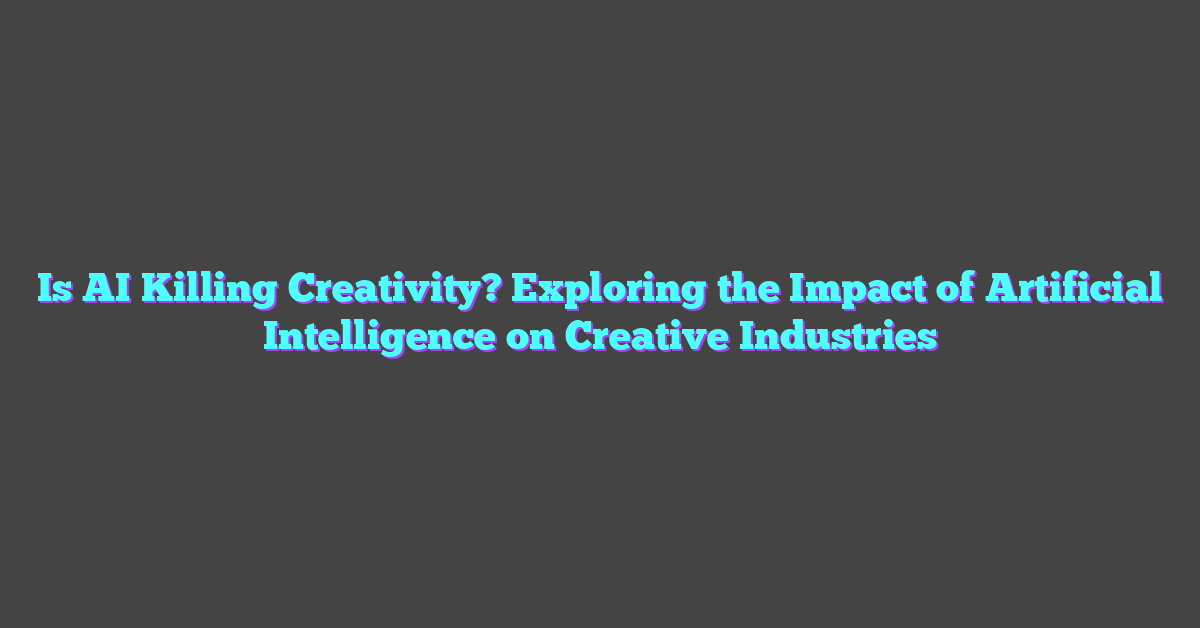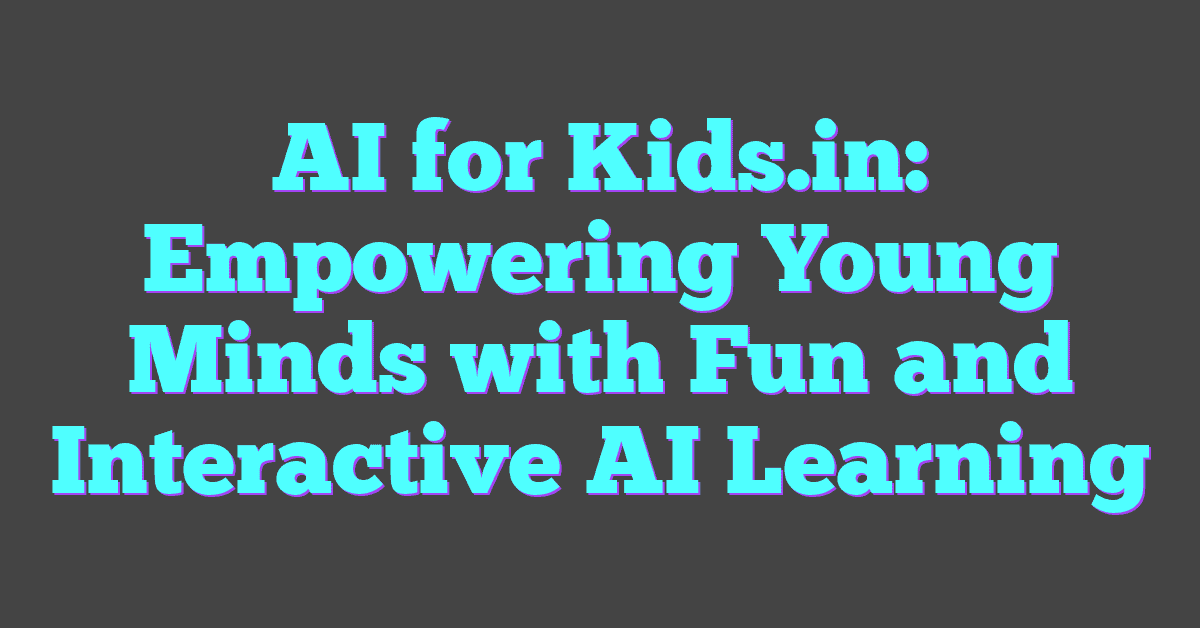In a world where artificial intelligence is rapidly advancing, many wonder if it’s stifling human creativity. From AI-generated art to automated writing, machines are stepping into roles traditionally held by humans. But does this mean our creative spark is being snuffed out?
Some argue that AI tools enhance creativity by handling mundane tasks, freeing up time for more innovative pursuits. Others worry that relying on algorithms might lead to a loss of originality and human touch. As technology continues to evolve, the balance between human ingenuity and machine efficiency becomes a fascinating topic worth exploring.
The Rise of AI in Creative Industries
Artificial intelligence isn’t just for data analysis anymore; it’s transforming creative fields too. From generating music to scripting movies, AI’s influence is becoming evident. These advancements raise questions about the future of human creativity.

Impact on Music and Visual Arts
AI algorithms now compose symphonies and create visual art. Platforms like OpenAI’s MuseNet can generate music in various styles, blending elements seamlessly. AI-generated art, such as the works produced by deep learning models like DeepArt, often surprises audiences with its creativity and complexity. These technologies don’t replace artists but offer tools to enhance their creative process. For instance, musicians use AI to experiment with new sounds, while visual artists employ AI to generate unique design elements.
Changes in Literary and Film Productions
In the literary world, AI tools assist authors by suggesting plot twists and improving language use. OpenAI’s GPT-3, for example, writes coherent and engaging text, streamlining the writing process. Filmmakers use AI for scriptwriting, scene generation, and even casting. Filmmaker Ridley Scott’s use of AI to storyboard scenes illustrates this trend. AI ensures consistency and helps creators explore ideas they might not have considered otherwise.
By integrating AI, creative industries innovate and evolve, pushing the boundaries of what was once thought possible. From music generation to filmmaking, AI’s presence marks a significant shift, blending machine capability with human creativity.
Exploring the Debate: Is AI Killing Creativity?
The discussion on artificial intelligence’s impact on creativity sparks diverse opinions. It’s crucial to explore both the potential benefits and concerns associated with AI in creative fields.
Arguments for Enhanced Creativity Through AI
AI enhances creativity by providing innovative tools and methods. These systems generate music, visual art, and literature, helping artists overcome creative blocks and experiment with new styles. For instance, AI tools like Amper Music and DeepArt offer unique compositions and artwork that inspire human creators. With AI’s data processing capabilities, creators can access vast amounts of information, refine ideas, and produce more polished content. Authors, for example, can use AI to identify plot inconsistencies, improving narrative coherence. AI can perform repetitive tasks, allowing artists to focus on higher-order creative processes. This collaboration results in the fusion of machine precision with human imagination, generating novel and diverse outputs.
Concerns About AI Limiting Human Creativity
While AI offers opportunities, it raises concerns about diminishing human originality. There’s a fear that over-reliance on AI-generated content may stifle unique perspectives and lead to homogenization of art. Critics argue that AI’s algorithm-based creations might lack the emotional depth and cultural context inherent in human artistry. This reliance could also lead to creative complacency, where artists might rely on AI solutions instead of pushing their own conceptual boundaries. Additionally, the use of AI in content creation poses questions about authorship and ownership. If an AI contributes significantly to a piece of work, determining the creator’s identity becomes complex. These concerns highlight the need to strike a balance between leveraging AI’s capabilities and preserving the intrinsic value of human creativity.
AI Influences on the Creative Process
AI continues to reshape how creative professionals approach their work. By integrating advanced algorithms, AI offers unique opportunities to enhance and extend artistic capabilities.
How AI Tools Support Creative Professionals
AI tools assist artists in several ways:
- Generating Content: AI generates original music, artworks, and texts. For instance, OpenAI’s GPT-3 produces text based on given prompts, aiding writers in overcoming blocks.
- Enhancing Creativity: Applications like DeepArt transform photos into artwork styled after famous painters, allowing continuous experimentation.
- Automation of Repetitive Tasks: Tools such as Adobe Sensei automate mundane tasks such as photo tagging and alignment, freeing time for creative pursuits.
- Providing Insights: AI analyzes trends and preferences, providing creators with informed suggestions, bridging gaps between creativity and market demand.
Potential Risks and Limitations
Despite its benefits, AI poses certain risks and limitations:
- Loss of Originality: Over-reliance on AI-generated content may lead to homogenized outputs, diminishing unique human expression in art.
- Ethical Concerns: Issues of authorship and intellectual property arise when AI contributes significantly to creative works, complicating ownership rights.
- Skill Degradation: Dependence on AI tools can result in reduced practice of essential artistic skills, potentially diminishing creative expertise over time.
- Bias in AI: AI systems may perpetuate existing biases present in training data, affecting the diversity and inclusivity of creative outputs.
By understanding these influences, creative professionals can better navigate the integration of AI in their fields.
Future Prospects of AI in Creativity
The integration of AI in creative processes continues to evolve, presenting numerous exciting possibilities. Exploring future prospects offers insights into how AI can further augment creativity in various fields.
Innovations to Look Forward To
AI innovations promise to redefine creative landscapes across multiple domains. In visual arts, AI can generate art pieces that fuse different styles, creating unique, novel compositions. Technologies like GANs (Generative Adversarial Networks) enable artists to craft new visual experiences. These networks generate high-quality images from text descriptions or transform existing artworks into different styles.
Music creation also benefits from AI advancements. Tools like OpenAI’s MuseNet can compose original music pieces by learning from vast datasets of musical compositions. This allows for the blending of genres, creating innovative soundscapes. AI-powered software already assists musicians in composing, arranging, and mixing music tracks, making the process more efficient and inspiring.
AI-driven literature is another emerging frontier. AI models, such as GPT-3, can generate coherent and contextually relevant text, aiding writers in brainstorming ideas, structuring plots, and even drafting entire sections of text. These tools offer unique perspectives and variations, enriching the creative writing process.
Ethical Considerations and Human Input
The integration of AI in creative fields brings about significant ethical considerations. Ensuring originality and authorship integrity is crucial. Artists and creators must navigate the complexities of intellectual property rights when AI generates content. Establishing clear guidelines and legal frameworks will help address these challenges.
Human input remains essential in the creative process, even with advanced AI tools. AI assists and enhances human creativity but doesn’t replace it. Artists and creators should leverage AI to expand their creative horizons while maintaining their unique voice and perspective. This symbiotic relationship can lead to a richer, more diverse creative landscape.
By addressing these ethical considerations and emphasizing the importance of human input, the creative community can harness AI’s potential while preserving the core essence of human creativity.
Conclusion
AI’s role in creativity is undeniably transformative. It’s reshaping how artists approach their work, offering new tools and possibilities. While AI can generate unique art and assist in creative endeavors, the human touch remains irreplaceable. The blend of AI and human ingenuity promises a future where creativity knows no bounds. Ethical considerations around originality and authorship will be key as we navigate this evolving landscape. Ultimately, the synergy between AI and human creativity can lead to richer, more diverse artistic expressions, ensuring that the essence of human creativity continues to thrive.
Frequently Asked Questions
How is artificial intelligence impacting the music industry?
Artificial intelligence is impacting the music industry by providing tools that can compose original music, generate unique soundscapes, and assist artists in their creative processes. AI can analyze vast datasets of music, recognize patterns, and help composers create harmonies or melodies.
How is AI used in visual art creation?
AI is used in visual art creation by generating unique artworks, enhancing design processes, and offering new mediums for artistic expression. Algorithms can create art based on predefined styles or learn and replicate the techniques of famous artists.
Can AI write literature?
Yes, AI can write literature by generating text based on input data, assisting authors in overcoming writer’s block, or even creating entire stories. However, human editing and input are often required to maintain originality and coherence.
What role does AI play in film production?
AI plays a role in film production by automating tasks such as script analysis, scene generation, and video editing. It can also create special effects, storyboard sequences, and offer new narrative possibilities.
Are there ethical concerns regarding AI in creative fields?
Yes, there are ethical concerns regarding originality, authorship, and the integrity of creative works made with AI. Ensuring that AI-generated content respects the contributions of human creators is a critical issue.
Is human input still necessary in creative processes involving AI?
Absolutely, human input remains essential in creative processes involving AI. While AI tools can assist and enhance creativity, the unique perspective and emotional depth provided by human creators are irreplaceable.
How does AI reshape the creative landscape?
AI reshapes the creative landscape by introducing new tools and methods for creating art, music, literature, and film. It expands the boundaries of what is possible, allowing for innovations and efficiencies that were previously unimaginable.
What are the future possibilities of AI in creative industries?
Future possibilities of AI in creative industries include more sophisticated collaboration between AI and human artists, the creation of entirely new art forms, and the democratization of creative tools, making them accessible to a broader audience.




